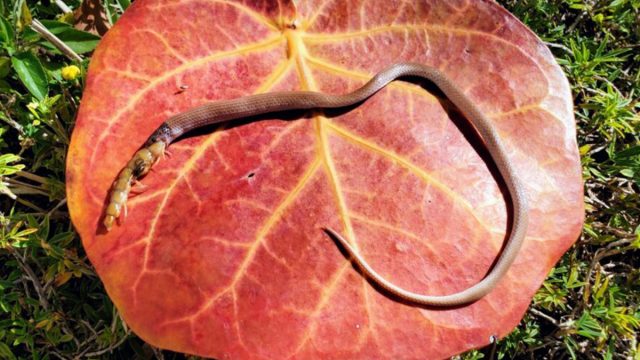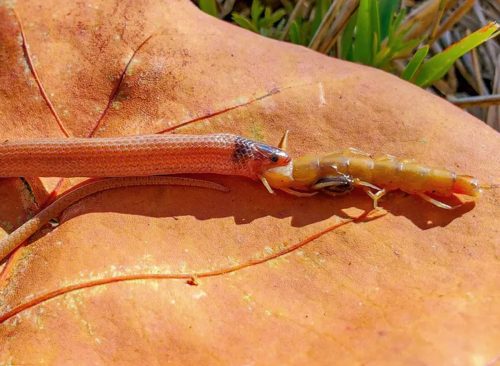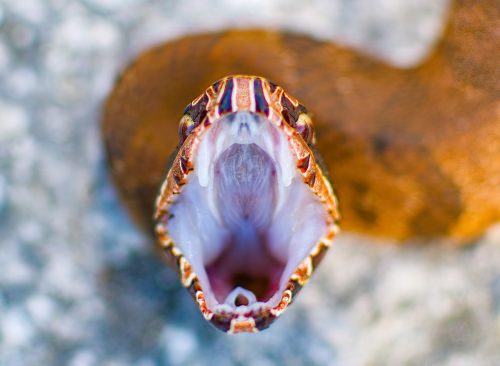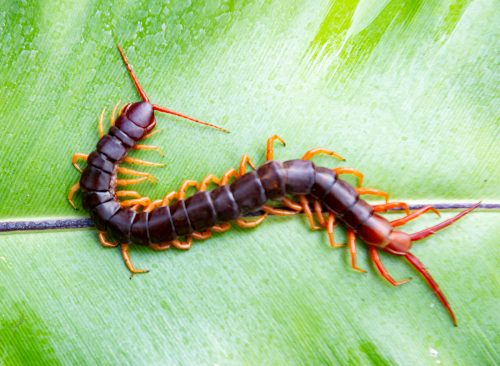The Rarest Snake in North America Found Dead in Florida After Losing Tug-of-War With Half Eaten Giant Centipede
“It’s extremely rare to find specimens that died while eating prey.”

It's a dark reminder that even predators don't have it easy in the wild: An extremely rare snake was seen in the Florida Keys for the first time in four years. Alas, it was found dead with a half-consumed giant centipede in its mouth. But scientists say the discovery—aside from being highly ironic—was notable and will be useful. Read on to find out why.

The rim rock crowned snake (or Tantilla oolitica) is super-rare, so much so that it's considered the rarest snake in North America. It was seen so infrequently that scientists weren't sure what it ate. That's one thing that makes this discovery significant to animal experts—it gives them a clue as to how the snake stays alive (when it manages to stay alive). It also might be a sign that the reptile, which is considered endangered, is on the rebound in the area.

The dead snake and its prey were discovered by a hiker in a state park in Key Largo. They were transferred to the Florida Museum of Natural History, where experts launched an investigation. "I was amazed when I first saw the photos," said Coleman Sheehy, the Florida Museum's herpetology collection manager. "It's extremely rare to find specimens that died while eating prey, and given how rare this species is, I would never have predicted finding something like this. We were all totally flabbergasted."

Sheehy and his team performed a "digital autopsy," creating a 3D model of the centipede and snake to try and determine why the snake died. This gave investigators a picture of its injuries and the contents of its gut. It might appear that the snake choked on the large centipede. But snakes can unhinge their jaws to consume animals many times wider than themselves, so the scientists weren't high on that theory. A wound on the snake's side suggested the centipede may have injected it with venom during a struggle. But the injury only caused a small amount of internal bleeding.

Ultimately, the CT scans showed the snake's trachea was wrapped tightly around the widest part of the centipede's body. It appears the snake really did suffocate on its overly ambitious meal.

Scientists hope the discovery means the T.oolitica population is on the rebound in the Florida Keys. Once common, the snake has been listed as "threatened" in Florida since 1975, as humans began to infringe on its habitats. "We can't say for sure whether or not they're still present in peninsular Florida," said Sheehy. "Absence of evidence is not evidence of absence, but their habitat has basically been destroyed." He hopes the team's CT scans will help scientists learn more about the species.














